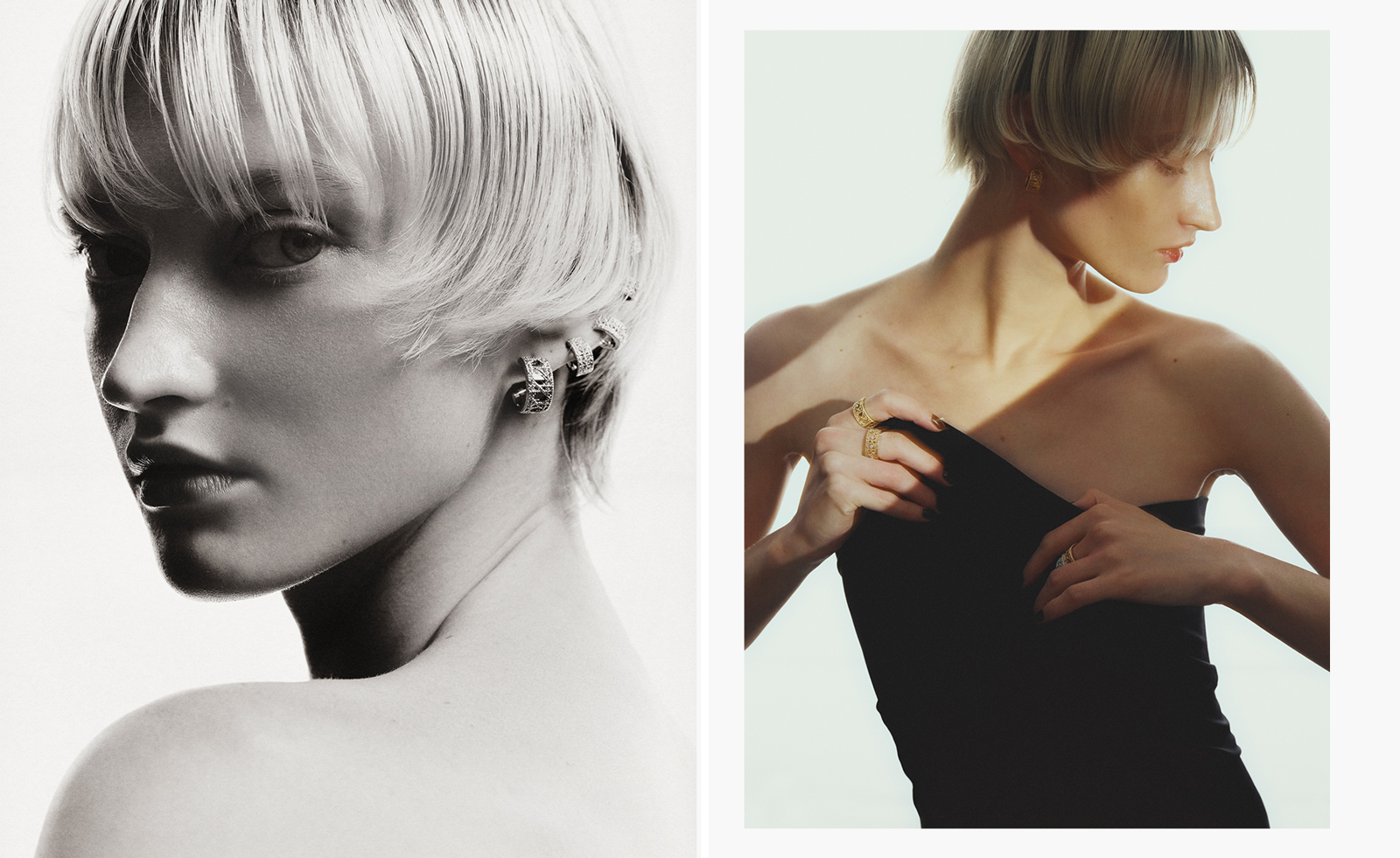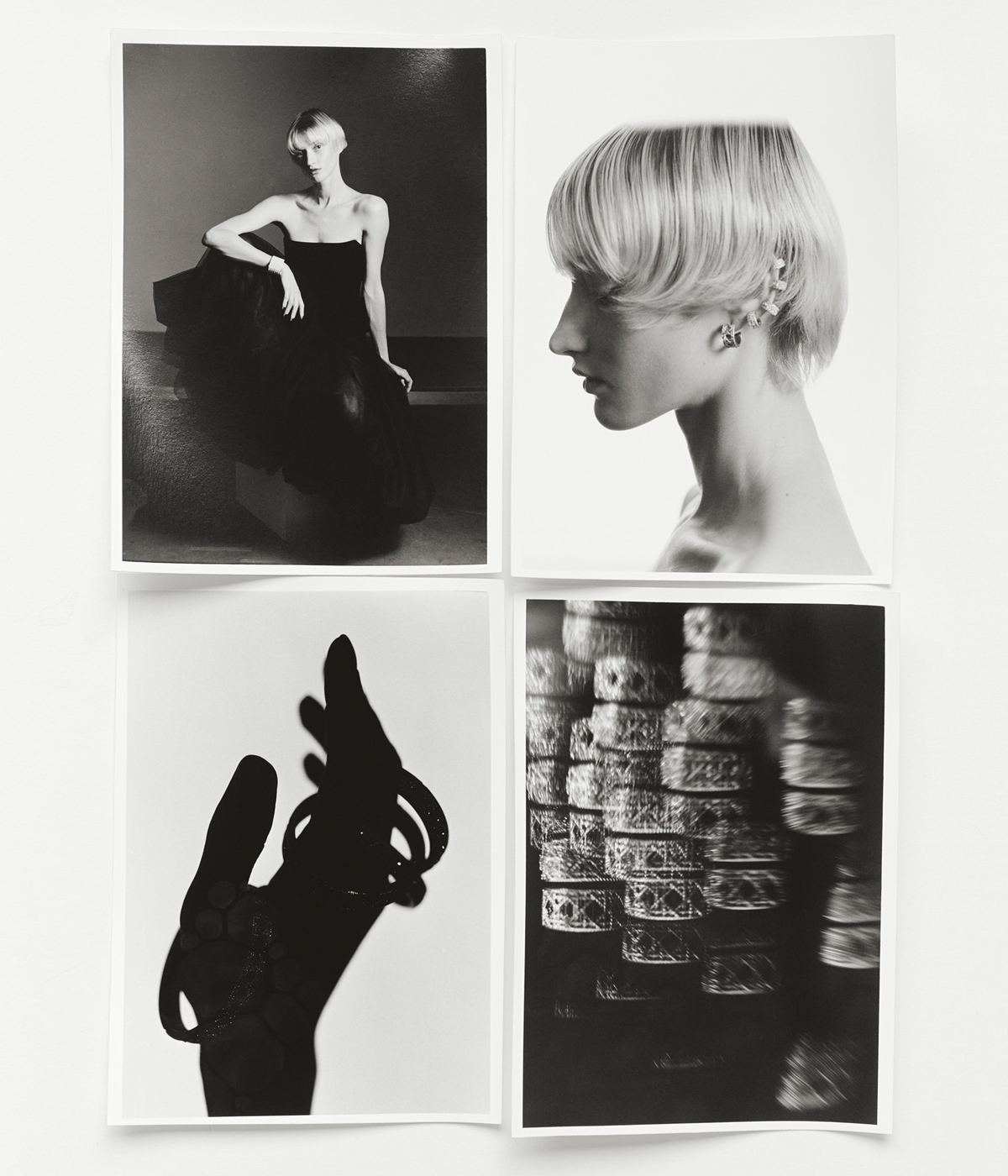
For Victoire de Castellane, creative director of Dior Joaillerie, jewellery design is a celebration of bold patterns and whimsical designs. In the decades since establishing Dior Joaillerie in 1999, de Castellane has rethought the often-serious parameters of high jewellery in an embrace of non-precious stones and a brilliant rainbow of colours for pieces that reference surreal and fantastical forms. This spirit of nonconformity continues through to the sculptural lines of her fine jewellery, which also jointly considers the influence of Dior’s heritage alongside contemporary references.
For the newest launch in the My Dior fine jewellery collection, de Castellane translates a traditional Dior motif into modern pieces, rethinking the distinctive cannage pattern. Composed of a geometric mash of squares and diagonals, it is synonymous with the caning technique on the rattan chairs popular in the 18th century. It became an enduring inspiration for Christian Dior, who seated guests at his first fashion show in 1947, at 30 Avenue Montaigne, on the Napoleon III chairs adorned with the pattern.

Throughout Dior’s history, it has appeared in haute couture and accessories. In 1953, it featured on the brand’s Eau Fraîche perfume bottle. Marc Bohan rethought its familiar lines in the 1960s, which were prevalent in his tweed and Op Art collections, while in the 1980s, Gianfranco Ferré recreated it on coats. In 1994, the motif was embossed on lambskin leather for the ‘Lady Dior’ bag while, in the 2000s, John Galliano gave it a typographical twist.
Now, de Castellane nods to this history by reinterpreting the cannage motif in fine jewellery, something she first considered in 2012. An homage to both the original chairs that inspired Christian Dior, and to her own memories of visiting the Dior boutique as a child, the collection is rife with personal references. In the new designs, the familiar motif is interwoven into rings, bracelets and earrings in a fine golden thread of yellow, rose and white gold. In slender bracelets, curvy earrings that hug the ear lobe, and stackable rings, jewellery cuts a clean silhouette, while some pieces are studded with diamonds for a precious spin on supple mesh.
Crafting this pattern in precious metals is not without its challenges, requiring the carefully considered craftsmanship also prevalent in haute couture. Each element of a piece is constructed separately, with a bracelet requiring nine separate steps in its creation, each undertaken by hand. To achieve the cannage-like effect, artisans use the lost-wax casting technique, where molten metal is poured into a wax replica of the jewellery piece and left to solidify. In the resulting geometrical grid, gold resembles woven straw, before being mirror-polished to a gleaming finish.
A version of this article appears in the December 2024 issue of Wallpaper*, available in print on newsstands from 7 of November, on the Wallpaper* app on Apple iOS, and to subscribers of Apple News +. Subscribe to Wallpaper* today







